In Pics: "Ring Of Fire" Solar Eclipse Dims Parts Of India
The annular solar eclipse, popularly known as the "ring of fire" eclipse, has become visible from parts of India, with social media flooded with pictures from the rare celestial event. This is the first solar eclipse of 2020. Skywatchers living within a narrow band covering parts of Rajasthan, Haryana, and Uttarakhand were able to see the "ring of fire" with much clarity. The solar eclipse is also called Surya Grahan in India.
-
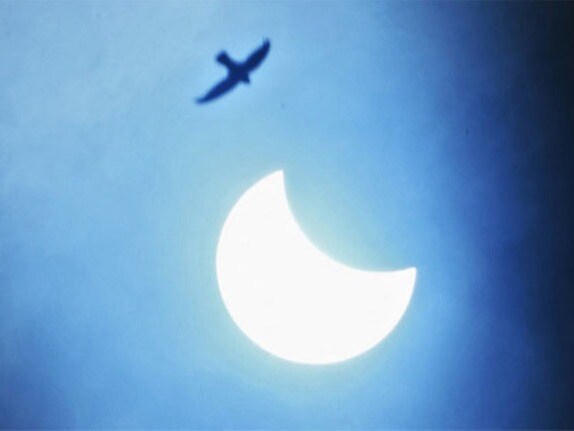 Haryana: A bird flies past as the moon partially covers the sun during an annular solar eclipse as seen from Kurukshetra, Haryana. Surya Grahan 2020, or the solar eclipse, has started. This year it is an annular eclipse also called the "ring of fire".
Haryana: A bird flies past as the moon partially covers the sun during an annular solar eclipse as seen from Kurukshetra, Haryana. Surya Grahan 2020, or the solar eclipse, has started. This year it is an annular eclipse also called the "ring of fire". -
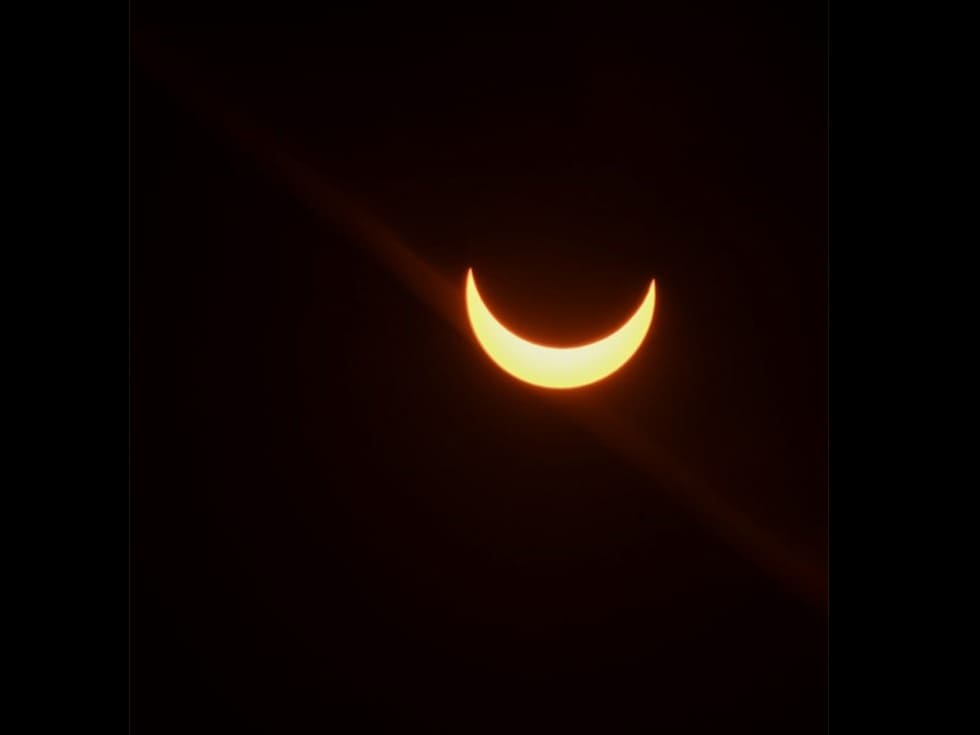 Delhi: The moon partially covers the sun during an annular solar eclipse as seen from New Delhi. People in parts of Rajasthan, Haryana, and Uttarakhand saw the dramatic "ring of fire" in the sky - the first solar eclipse of 2020. People in other parts of India were able to see a partial solar eclipse, also known as Surya Grahan.
Delhi: The moon partially covers the sun during an annular solar eclipse as seen from New Delhi. People in parts of Rajasthan, Haryana, and Uttarakhand saw the dramatic "ring of fire" in the sky - the first solar eclipse of 2020. People in other parts of India were able to see a partial solar eclipse, also known as Surya Grahan. -
 Rajasthan: Solar Eclipse 2020 as seen from Jaipur today. This time there are no arrangements to show the eclipse in BM Birla Planetarium campus in the city due to the coronavirus pandemic.
Rajasthan: Solar Eclipse 2020 as seen from Jaipur today. This time there are no arrangements to show the eclipse in BM Birla Planetarium campus in the city due to the coronavirus pandemic. -
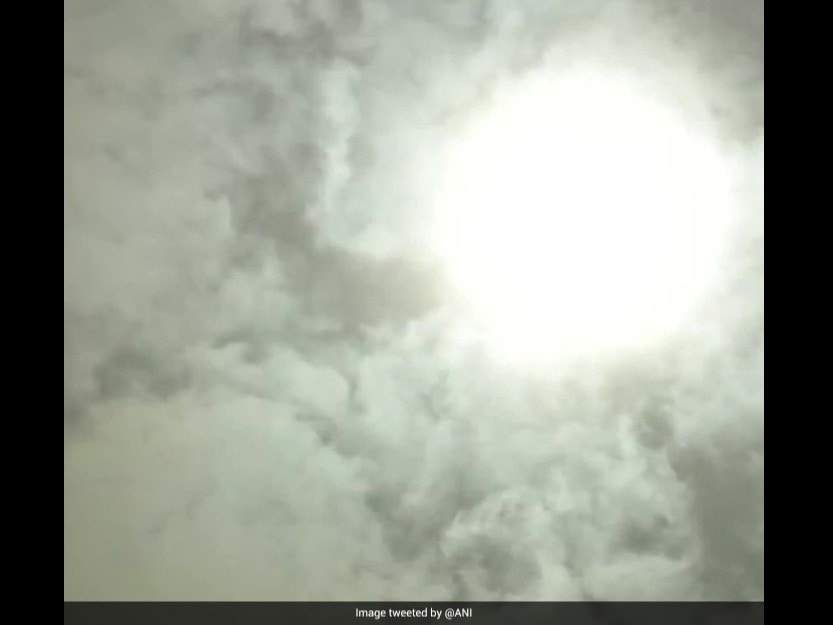 Delhi: Solar Eclipse or surya grahan seen from the national capital this morning. The first solar eclipse of this year coincides with the summer solstice, when the Northern Hemisphere has the longest day. The eclipse will also be visible from Congo, Sudan, Ethiopia, Yemen, Saudi Arabia, Oman, Pakistan and China.
Delhi: Solar Eclipse or surya grahan seen from the national capital this morning. The first solar eclipse of this year coincides with the summer solstice, when the Northern Hemisphere has the longest day. The eclipse will also be visible from Congo, Sudan, Ethiopia, Yemen, Saudi Arabia, Oman, Pakistan and China. -
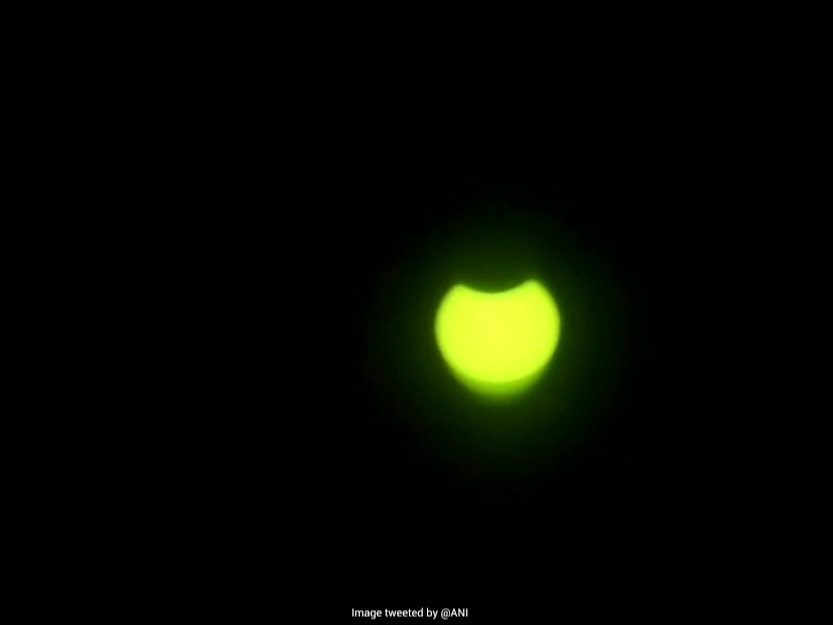 Maharashtra: Solar Eclipse as seen from Mumbai. The maximum eclipse time was at 12:10pm - when many people were able to see that gorgeous ring of fire. All of north India and parts of east as well as west India saw the eclipse magnitude of around 0.80. For southern India, magnitude went further down to between 0.30 to 0.70.
Maharashtra: Solar Eclipse as seen from Mumbai. The maximum eclipse time was at 12:10pm - when many people were able to see that gorgeous ring of fire. All of north India and parts of east as well as west India saw the eclipse magnitude of around 0.80. For southern India, magnitude went further down to between 0.30 to 0.70. -
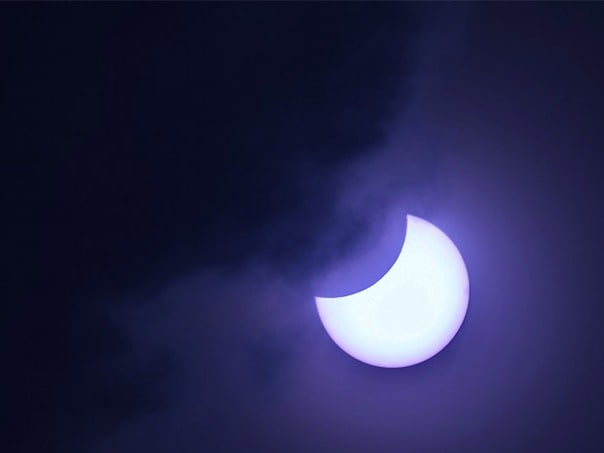 Karnataka: The moon partially covers the sun during an annular solar eclipse as seen from Bangalore. The next annular solar eclipse, which will be visible from India, will occur on May 21, 2031, whereas, a total solar eclipse will be seen on March 20, 2034.
Karnataka: The moon partially covers the sun during an annular solar eclipse as seen from Bangalore. The next annular solar eclipse, which will be visible from India, will occur on May 21, 2031, whereas, a total solar eclipse will be seen on March 20, 2034. -
 Kenya: The partial solar eclipse is captured using infra red filter in the cloudy sky in Nairobi, Kenya. Unlike the lunar eclipses that can be watched with naked eyes, solar eclipses require precautions otherwise you may harm your eyes.
Kenya: The partial solar eclipse is captured using infra red filter in the cloudy sky in Nairobi, Kenya. Unlike the lunar eclipses that can be watched with naked eyes, solar eclipses require precautions otherwise you may harm your eyes. -
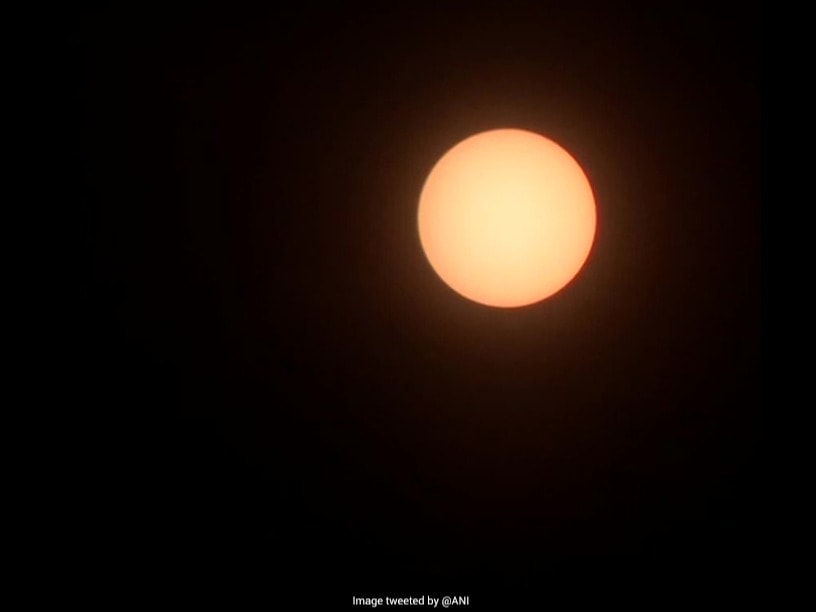 Jammu and Kashmir: Solar Eclipse 2020 visible from Jammu. So-called annular eclipses occur when the Moon -- passing between Earth and the Sun -- is not quite close enough to our planet to completely obscure sunlight, leaving a thin ring of the solar disc visible.
Jammu and Kashmir: Solar Eclipse 2020 visible from Jammu. So-called annular eclipses occur when the Moon -- passing between Earth and the Sun -- is not quite close enough to our planet to completely obscure sunlight, leaving a thin ring of the solar disc visible. -
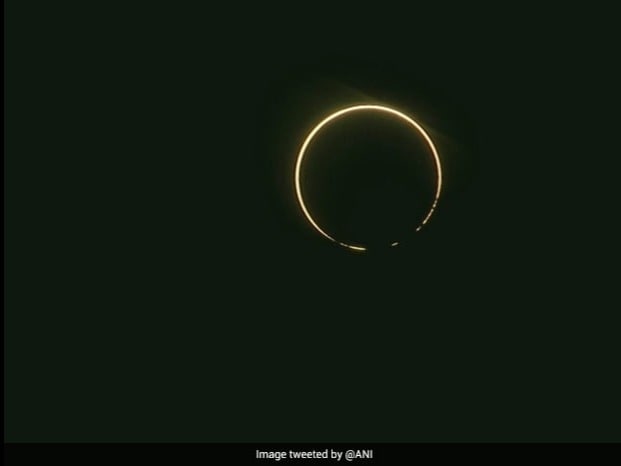 Uttarakhand: Solar Eclipse 2020 visible from Dehradun. The eclipse today arrived on the northern hemisphere's longest day of the year -- the summer solstice -- when Earth's north pole is tilted most directly towards the Sun.
Uttarakhand: Solar Eclipse 2020 visible from Dehradun. The eclipse today arrived on the northern hemisphere's longest day of the year -- the summer solstice -- when Earth's north pole is tilted most directly towards the Sun. -
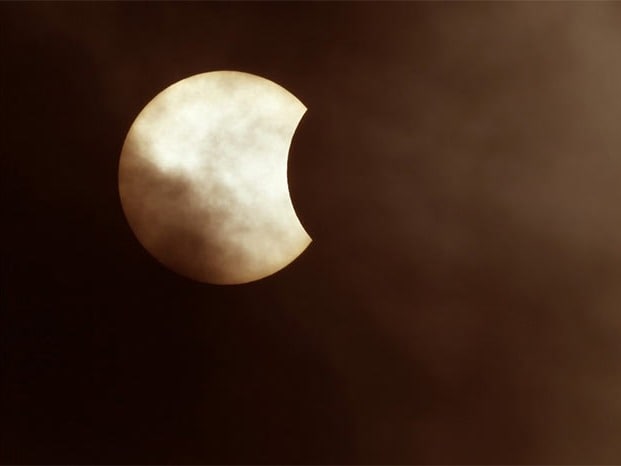 Israel: The moon moves in front of the sun during an annular solar eclipse as seen from the Israeli coastal city of Netanya. Astronomers recommend using eclipse glasses, preferably ISO certified, or a camera with proper filters to watch the solar eclipse. You can also project on a screen using a pinhole camera or telescope.
Israel: The moon moves in front of the sun during an annular solar eclipse as seen from the Israeli coastal city of Netanya. Astronomers recommend using eclipse glasses, preferably ISO certified, or a camera with proper filters to watch the solar eclipse. You can also project on a screen using a pinhole camera or telescope.
Advertisement
Advertisement
Advertisement
Advertisement
